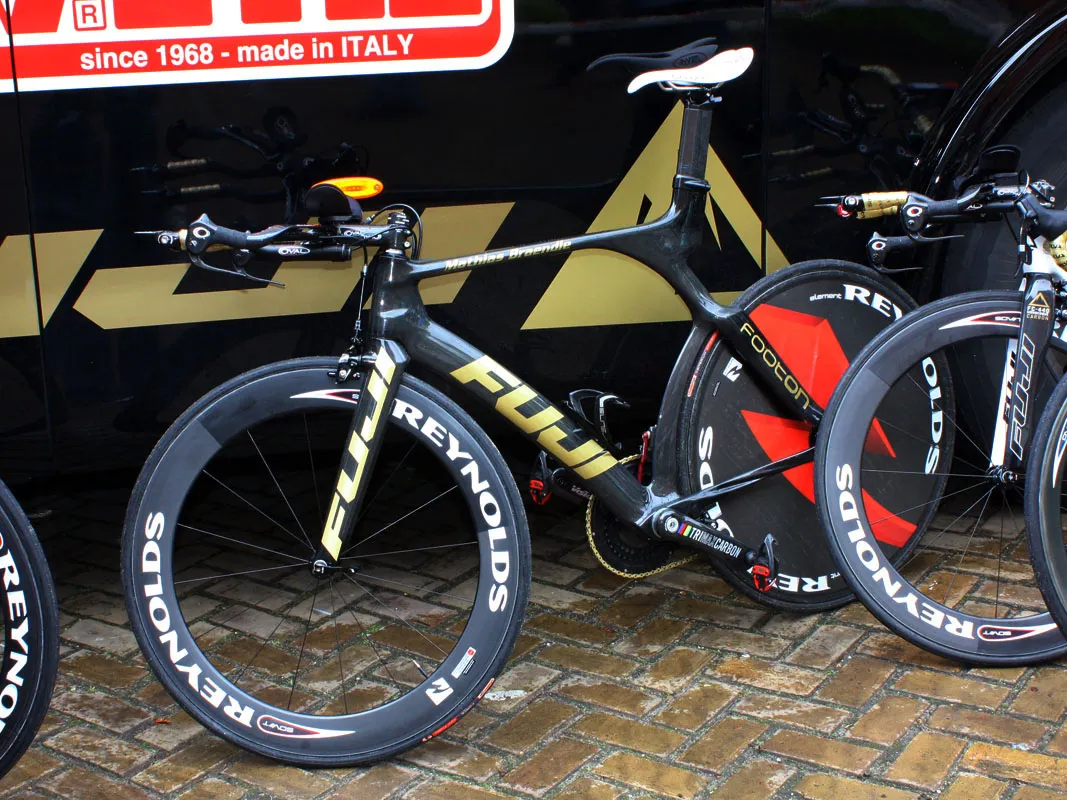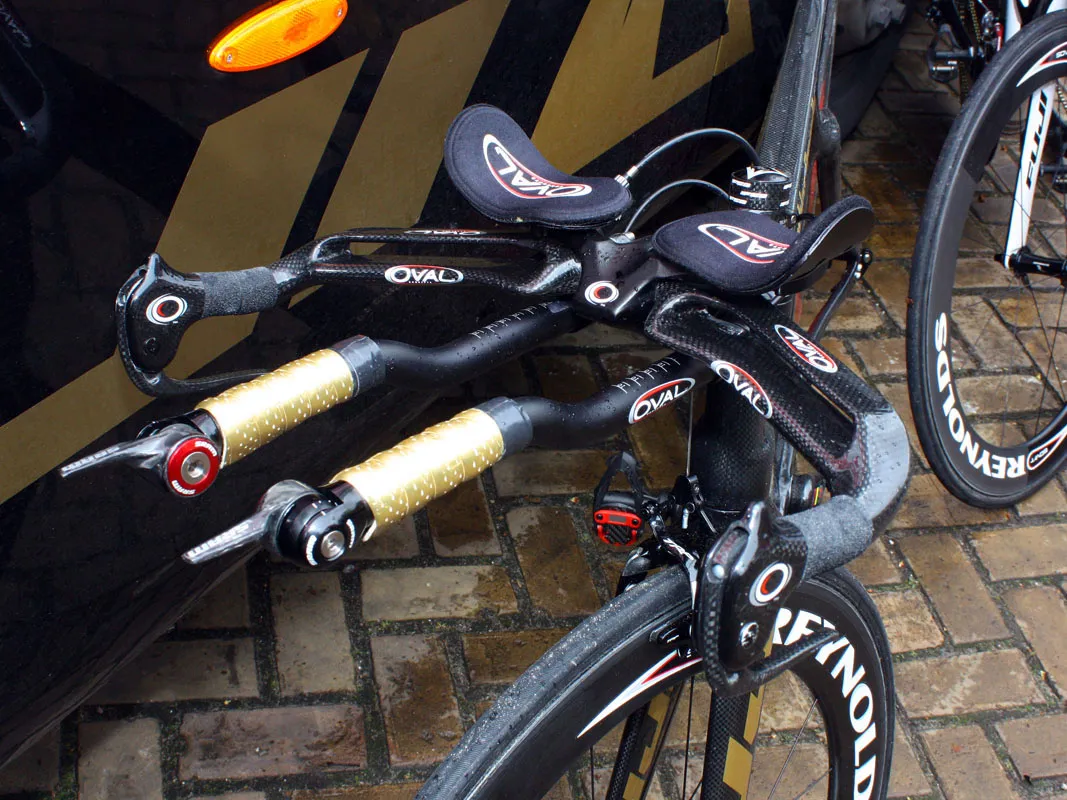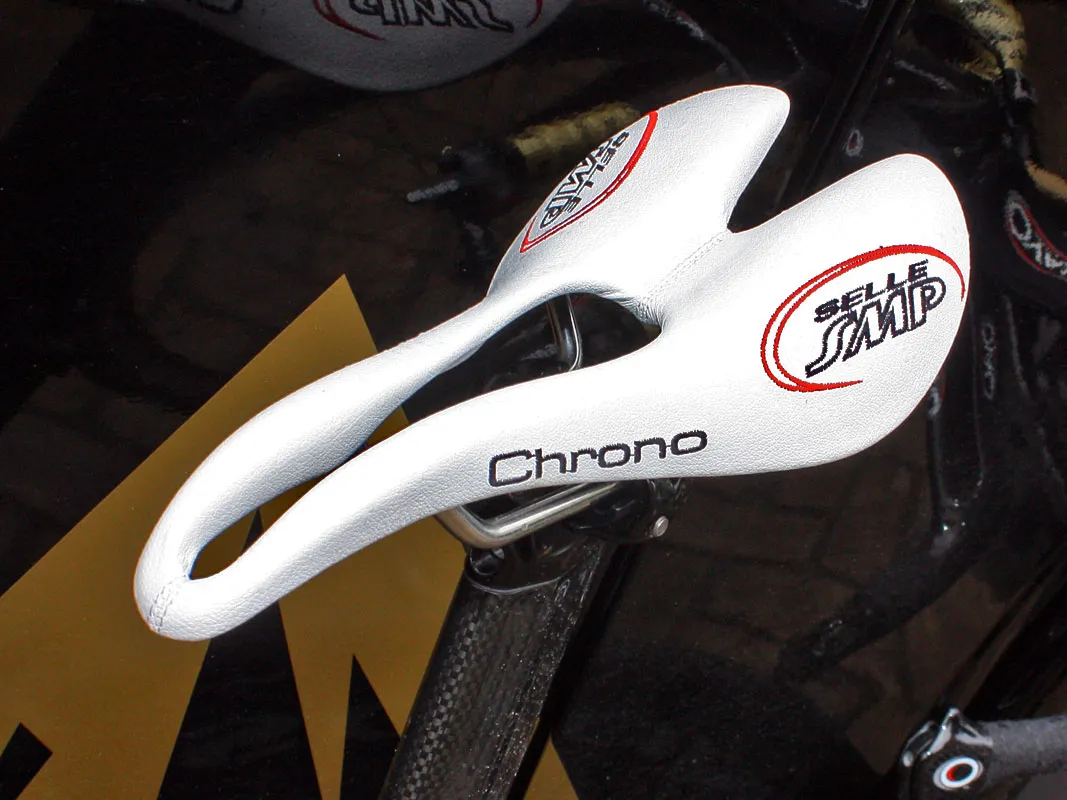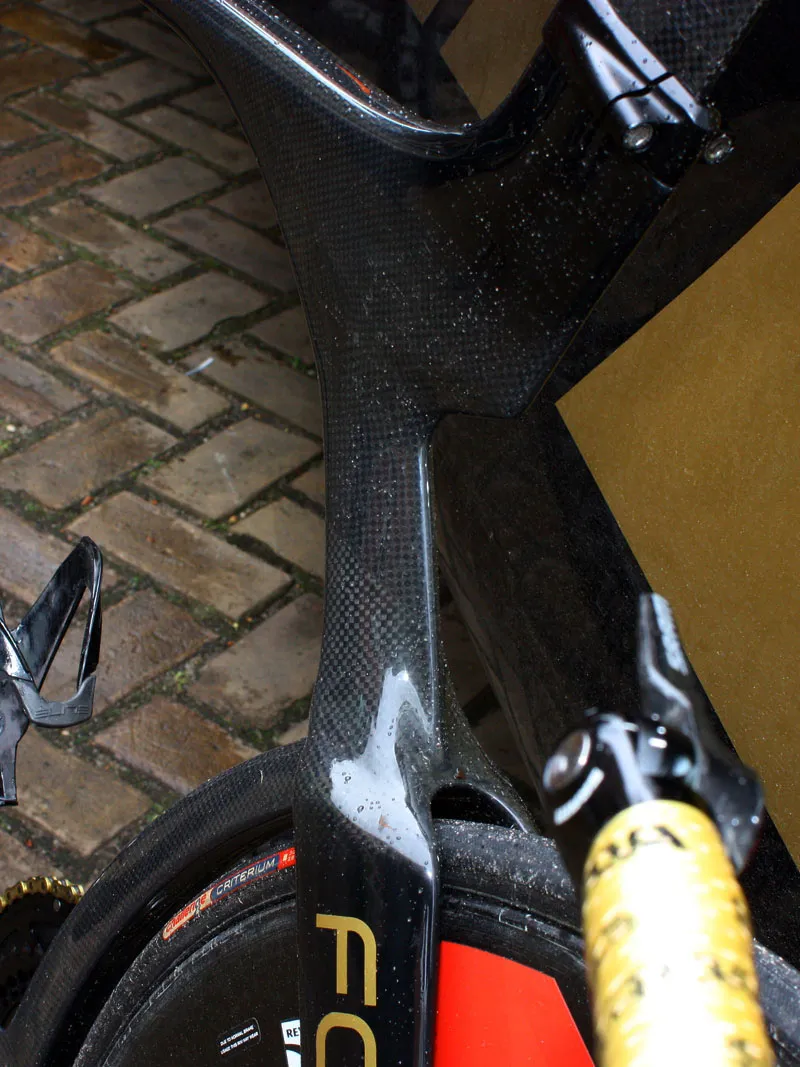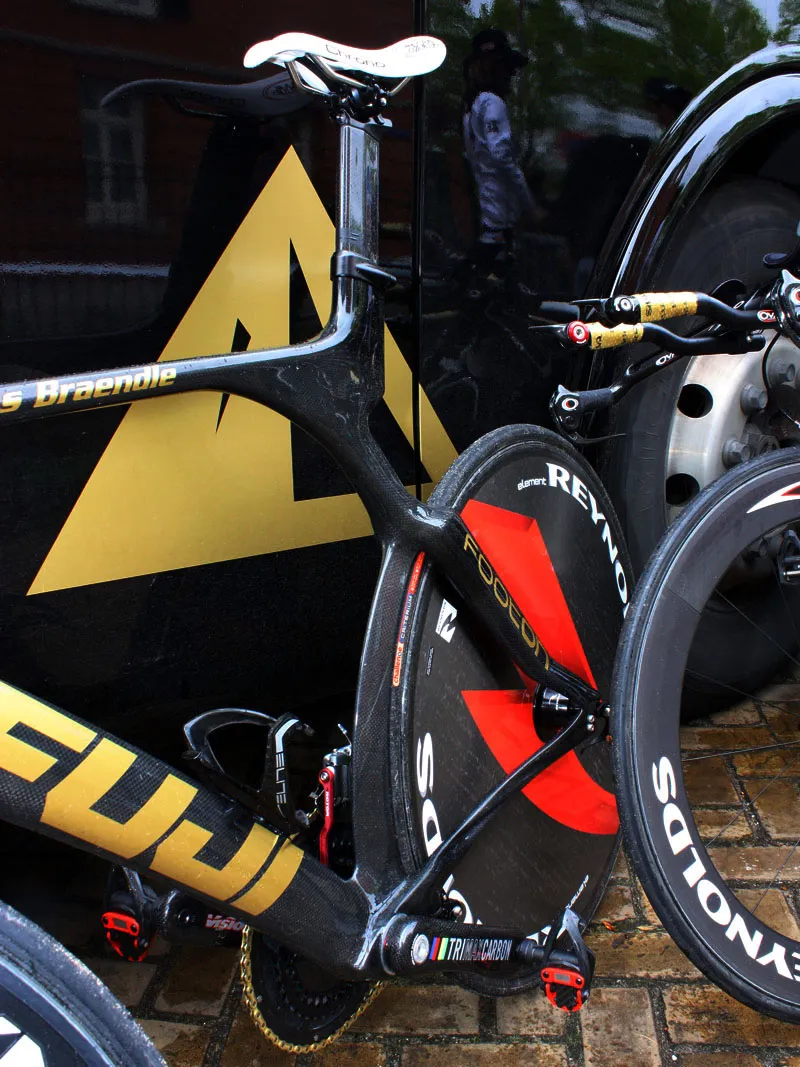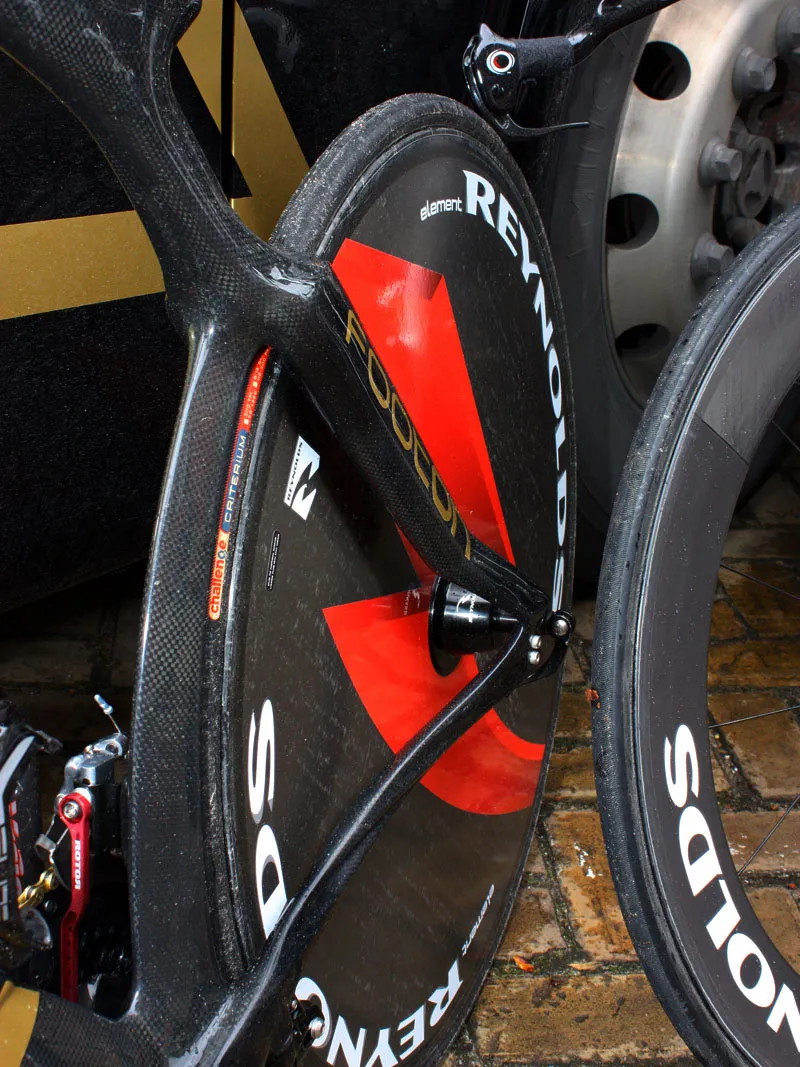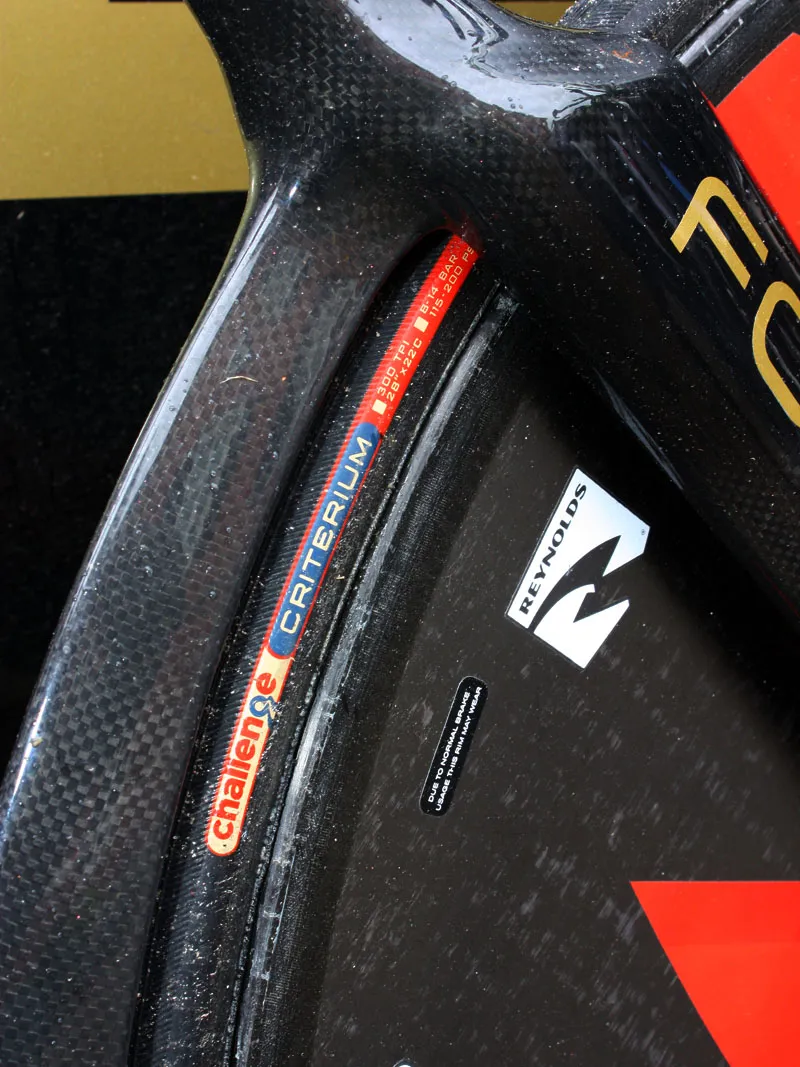Footon-Servetto rider Mathias Braendle was spotted on a new Fuji machine at the opening prologue of this year's Giro d'Italia – only it wasn't a Fuji at all. As it turns out, Braendle was testing a bike for Fuji's sister outfit, Kestrel, who acknowledged that it was the latest update of the company's 4000 aero platform.
According to Kestrel brand manager Steven Harad, the 4000 was fully developed – not just tested – in the wind tunnel with the lofty goal of surpassing the aerodynamic performance of Cervélo's P3. And Harad claims the company has met that goal, with the 4000 testing a substantial "20 percent faster".
The most striking feature on the frame is the radically shaped seat tube, which just barely shadows the curve of the rear wheel on the lower half before taking an abrupt bend forward towards the top tube on the teardrop-shaped upper half.
In addition, the head tube sports a necked-down centre section to reduce frontal area and the non-driveside chainstay is fluted to reportedly direct airflow out and away from the bike. The driveside stay uses a conventional rectangular profile as the fluting was found to be ineffective on account of the chainrings.
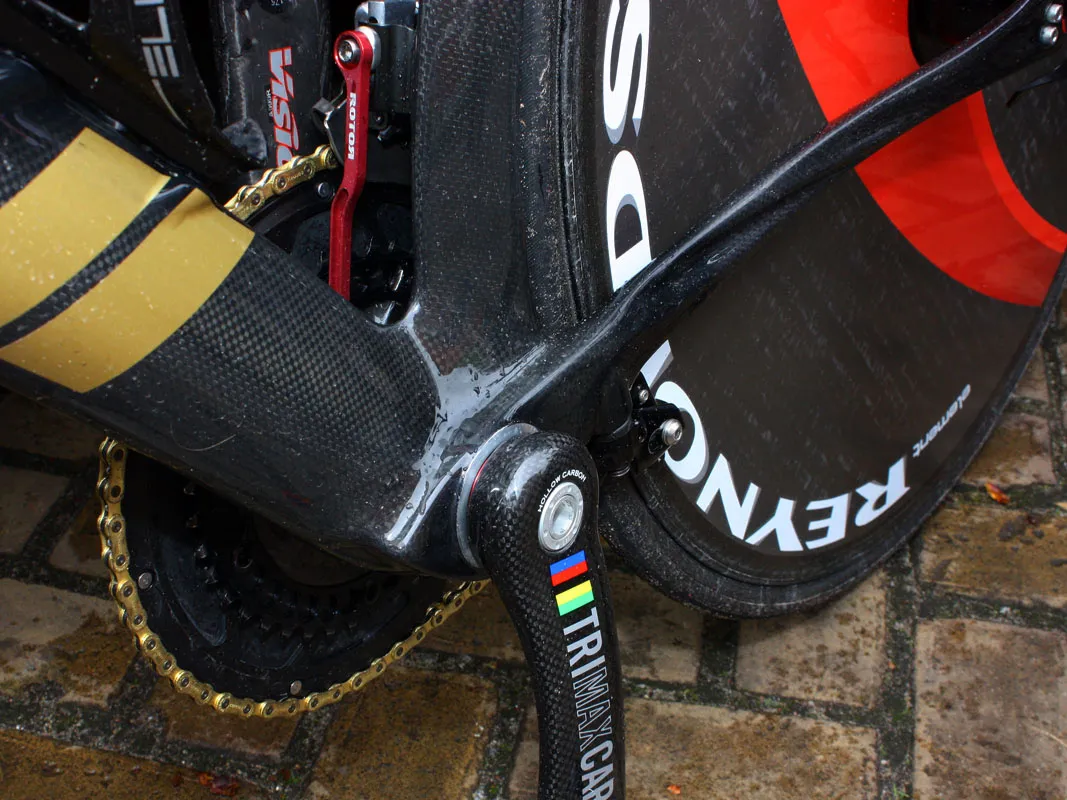
The BB30-compatible Kestrel 4000 marks the company's first non-threaded bottom bracket shell. The fluted non-driveside chainstay is designed to direct air outwards and away
Even the front of the BB30-compatible bottom bracket shell – a first for Kestrel – sports a wind-cutting edge and of course, the down tube, fork blades, seatstays and seatpost all have aerodynamic profiles.
Kestrel frame designers look to have been careful about the details, too. Sleek centre-pull TRP T920 calipers are used front and rear so as not to introduce turbulent housing and brake arms outside of the centre plane of the bike, and the rear brake is tucked underneath the bottom bracket where the air is already 'dirty'.
According to Harad, the company considered a reverse-mounted front brake at first but found it to actually produce more drag, not less, so they ultimately stuck with a conventional location.
Further back, Kestrel traded in the more common rear-entry horizontal dropouts for sliding vertical drops that still allow for a tight fit between the rear wheel and seat tube but without the usual hassles.
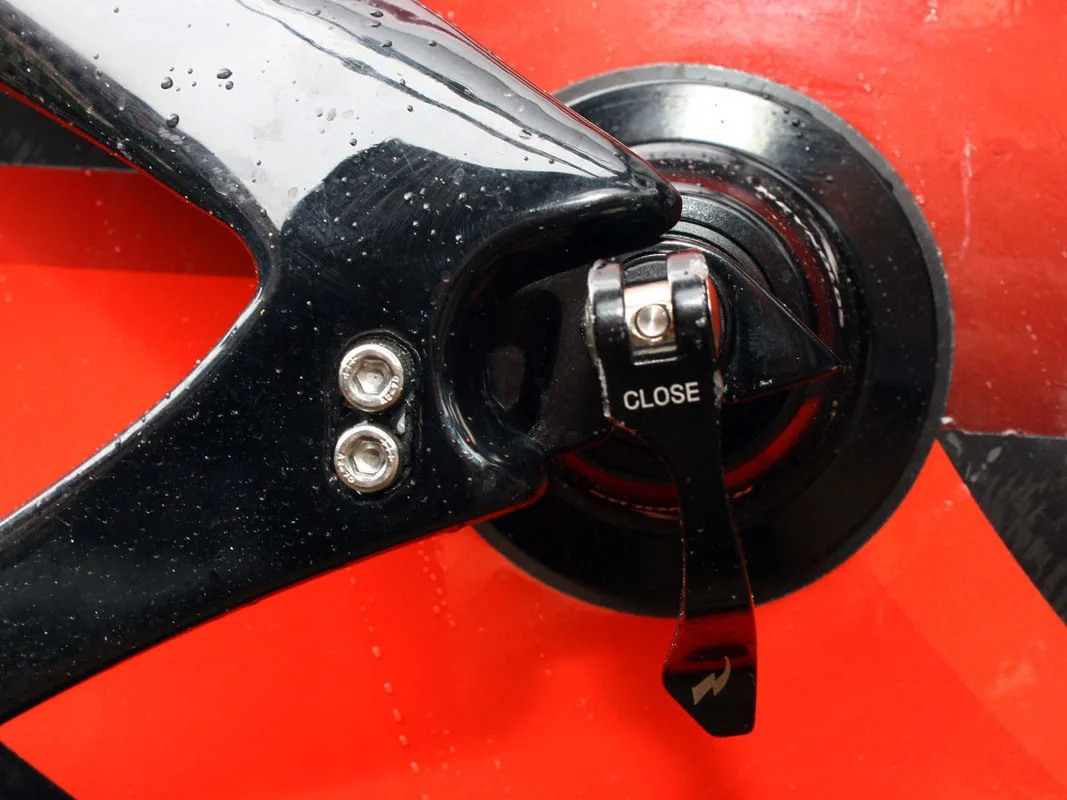
Sliding vertical dropouts allow for precise wheel positioning without the usual hassles of rear-entry horizontal drops
Key for pro-level time trial use, the vertical dropouts make for faster wheel changes, too. Plus, the sliding drops maintain proper rear derailleur spacing regardless of wheel position for more consistent shifting – especially important on time trial frames that often have convoluted cable routing.
Speaking of which, the 4000's internal cable routing is fully guided for easy servicing with the housing entering the frame behind the stem to maintain aerodynamically clean frame surfaces. O-ring seals up top are designed to prevent internal corrosion from sweat, energy gels and drinks.
Claimed frame and fork weight is an impressive 1,400g (3.09lb) and Harad says the new 4000 is available to the public with complete bike prices ranging from US$4,329-10,829, depending on build kit
In case you're wondering (as perhaps you should), Harad also confirms that the frame has received explicit UCI approval in spite of its unconventional appearance. "We submitted our design for approval prior to us doing the final design work," he said. "As you know, the UCI can be tough so we made sure to get approval first!"
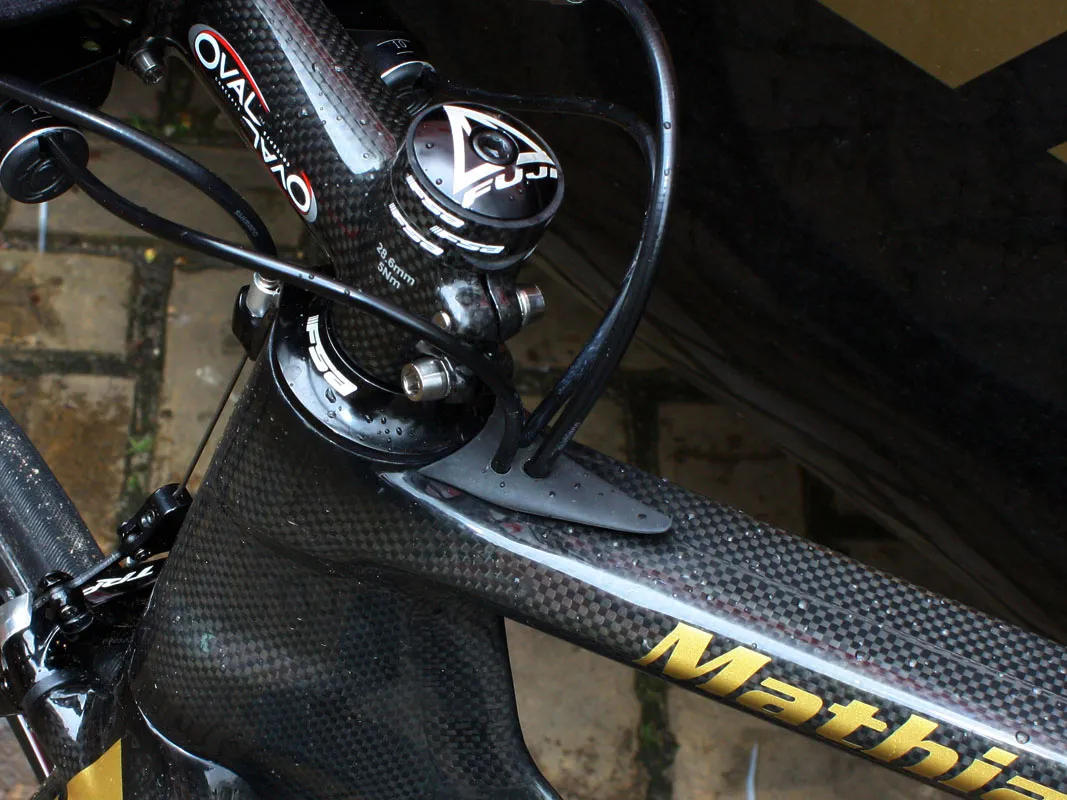
The internal cable routing is fully guided for easy servicing. The housing enters the frame behind the stem where the air is already 'dirty'
